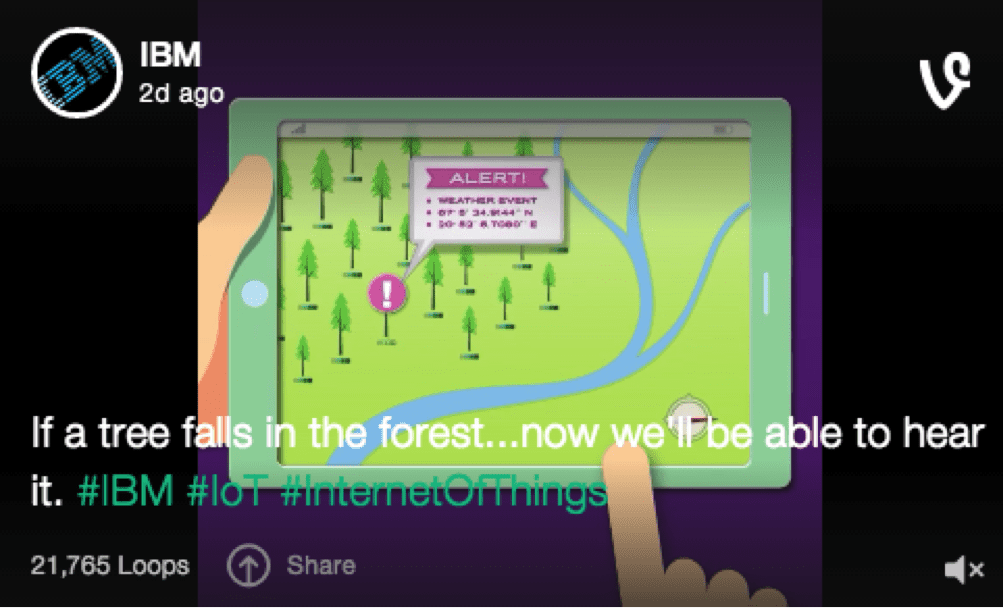Today’s IoT forecast called for a partnership between IBM and the Weather Company. If this announcement is at first perplexing, keeping scrolling down as IBM is also announcing (literally in the same press release) it will be investing $3 BILLION dollars to create a new Internet of Things business unit. In these early days, it’s hard to navigate through the fog of overblown media announcements, and vendors throwing money at piloting new gadgets. So what can we make of this news?
Mapping [More] of the Physical World
The significance of this partnership boils down to a rather concise quote from the CEO of the Weather Company:
“Google mapped the earth and we map the atmosphere.”
-David Kenny, chief executive of the Weather Company
Sounds simple enough, but the point is actually profound. In effect, by adding sensors to, tracking, affixing data streams, notification systems, and analytics to … weather events, The Weather Company & IBM are digitalizing ‘the elements’ (literally) of our experience that are as physical as the landscapes around us.
To map the atmosphere offers humans– governments, companies, consumers, and citizens– a new layer of context that is, perhaps, more reliable than our old friends, the meteorologist and the Almanac. It’s not that we haven’t already had weather data, it’s that this amount of data has not been connected with other business or institutional data sets to this extent. As more and more tech companies vie to enhance their cloud-based services with external data sources– big and small– this helps IBM compete with deep access to a new realm of context.
Applying Weather Patterns to Business Context
Just as geo-local data serves use cases across the supply chain, from inventory tracking to field technicians, to in-store navigation and hyper-local advertising, it’s not hard to fathom a myriad of ways atmospheric data can supplement its own host of use cases. Consider atmospheric data as a layer to inform existing business challenges, both B2B and B2C:
- Shipping: Atmospheric data informs how, when, and through which route to ship (via land, sea, or air) sensitive or perishable goods, such as foods, plants, animals, medicines, etc. to avoid loss, cost incurment, dangerous conditions.
- Advertising: Atmospheric data informs programmatic advertising at scale, but ‘localized’ by serving appropriate content based on weather conditions (e.g. rainboots for summer showers in Atlanta; mittens for the season’s first frost in California.)
The Weather Company already provides a service to aircrafts for atmospheric-informed navigation which it says reduces turbulence in flights by 70%, saving extra fuel costs, preserves aircraft integrity, and makes for more comfortable flying all around.
In its announcement, IBM mentions one likely application would be for auto insurance companies, where by adding Watson’s analysis to WSI’s weather data, it would be able to alert policy-holders of impending weather events so they could move their vehicles out of harm’s way in-time. At scale, the company claims this accumulates to millions of dollars in savings each year– for both insurance providers and policy-holders.
Atmospheric Context Enables More Holistic Predictive Analytics Capabilities
Looking across these examples, we can see that another key element for incorporating atmospheric data into institutional methodologies is that they enable a predictive element to decision-making. This predictive element is especially attractive to businesses because the ability to predict and make informed decisions as a result, leads to a decreased loss of productivity, investment, efficiency, or cost.
“When you think about most business processes, businesses treat every day as the same day, weather-wise,” said IBM Senior Vice President Bob Picciano. But this is simply not how our planet earth works, and this application might offer businesses as good a solution as has been available thusfar for ‘battening down the [proverbial] hatches.’
This announcement, hand-in-hand with IBM’s $3B investment in a new IoT division renders IBM a serious player in the IoT space, with a clear strategy to up the game in terms of data strategy, integration, and analytics. It enhances IBM’s ability to support the data layer serving some of the core use cases for IoT, such as service and innovation.
Today’s Forecast: Greater Visibility; Tomorrow’s Forecast: Better Context
As the clouds part, we see that this move will help IBM enhance its already sophisticated data services by adding in a layer of context that is important to businesses, but largely untracked today. According to the American Meteorological Society, weather conditions cost U.S. businesses about a half a trillion dollars annually.
The Weather Company understands this inevitability better than anyone, and sees IBM as a way to bridge the gulf from raw data to informed and actionable decision-making. “People creating the next apps to serve businesses and business clients will be able to think more organically about including weather intelligence into their apps,” explains Picciano. This partnership will help enable visibility for businesses, a call to leverage IBM to more effectively wield context for better decision-making, both in real-time, but predictively as well.


